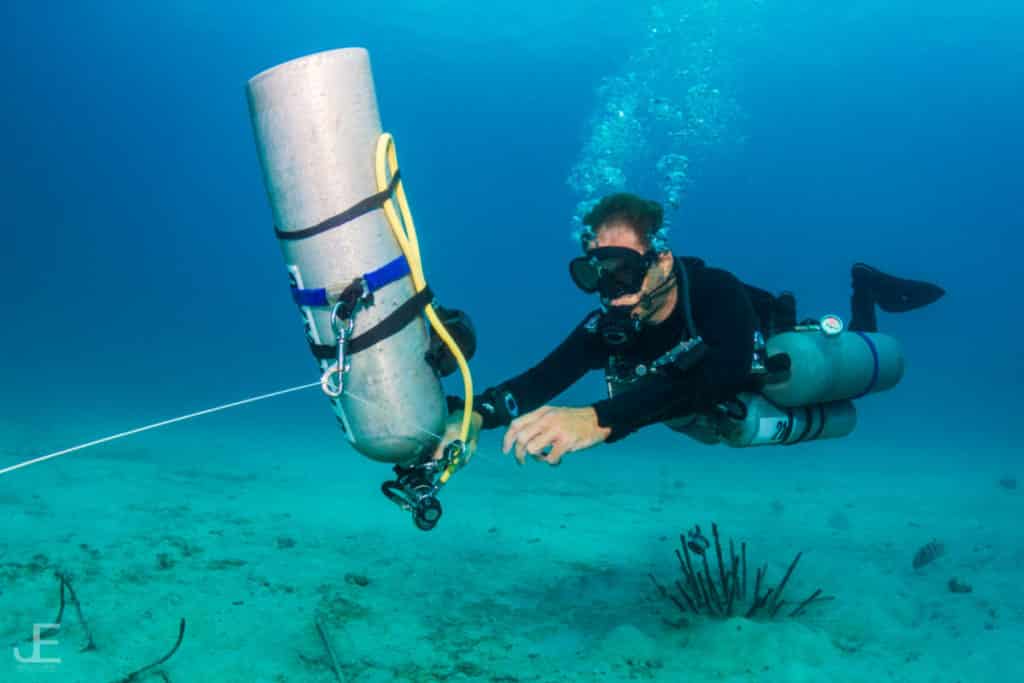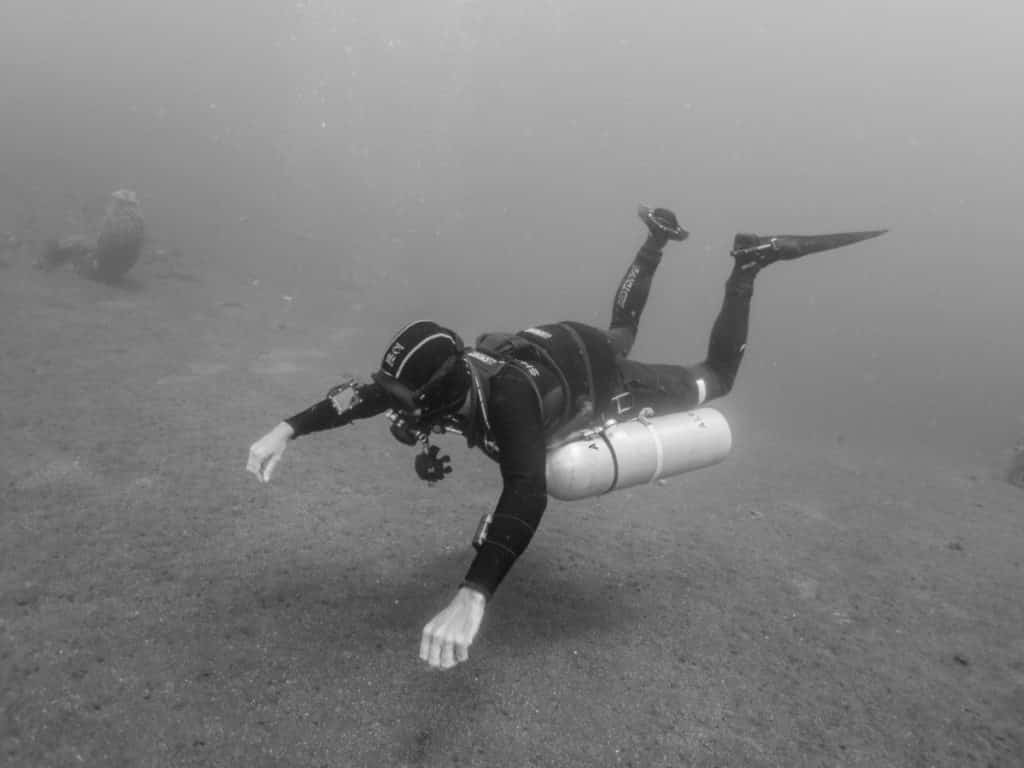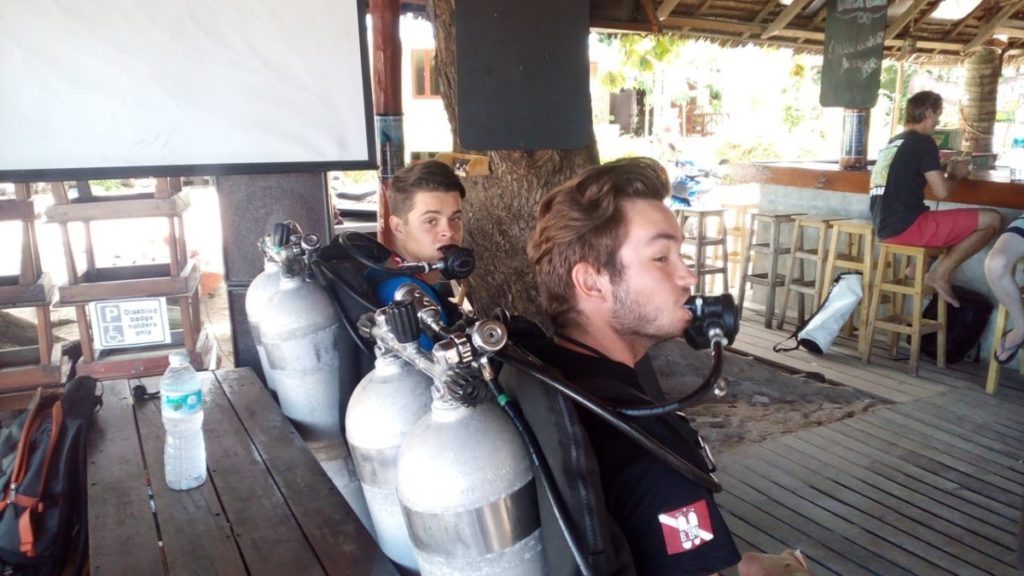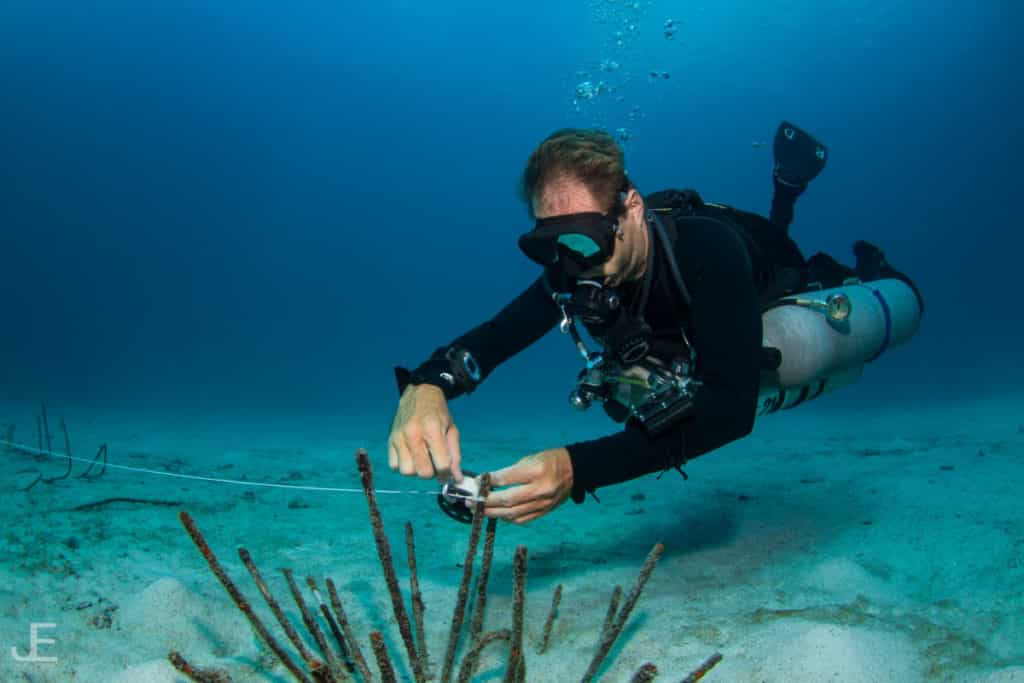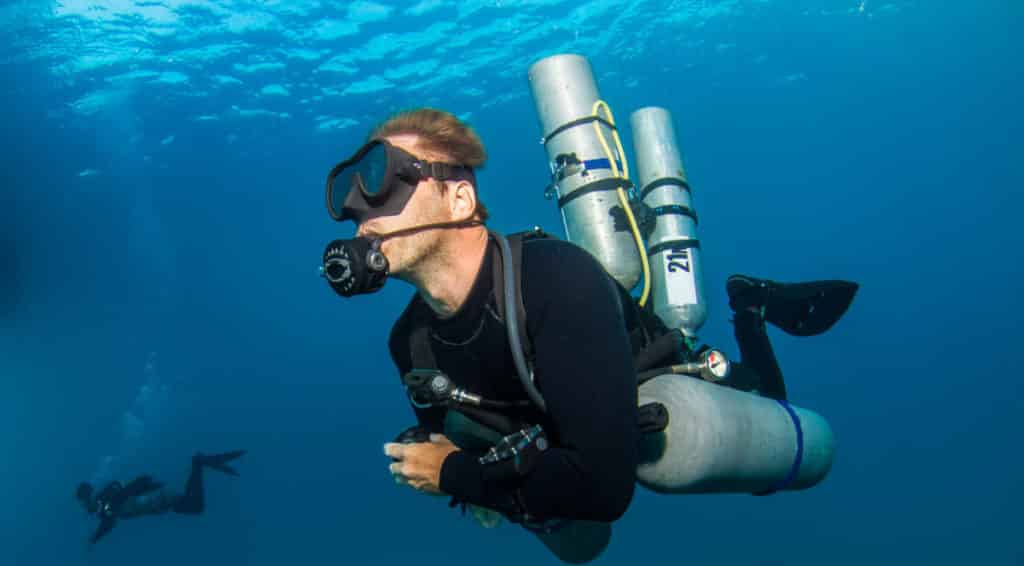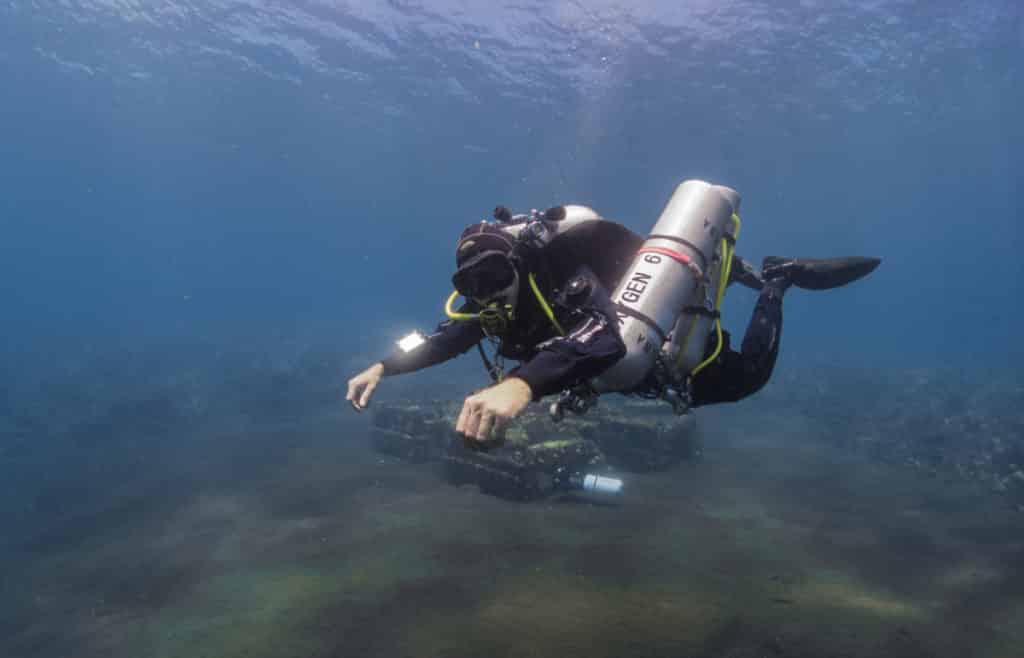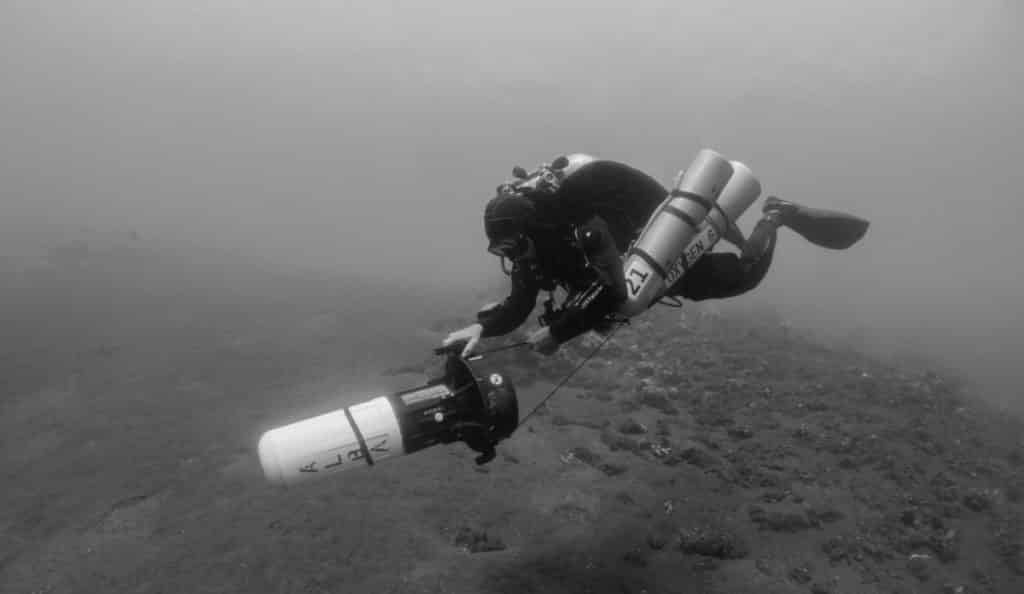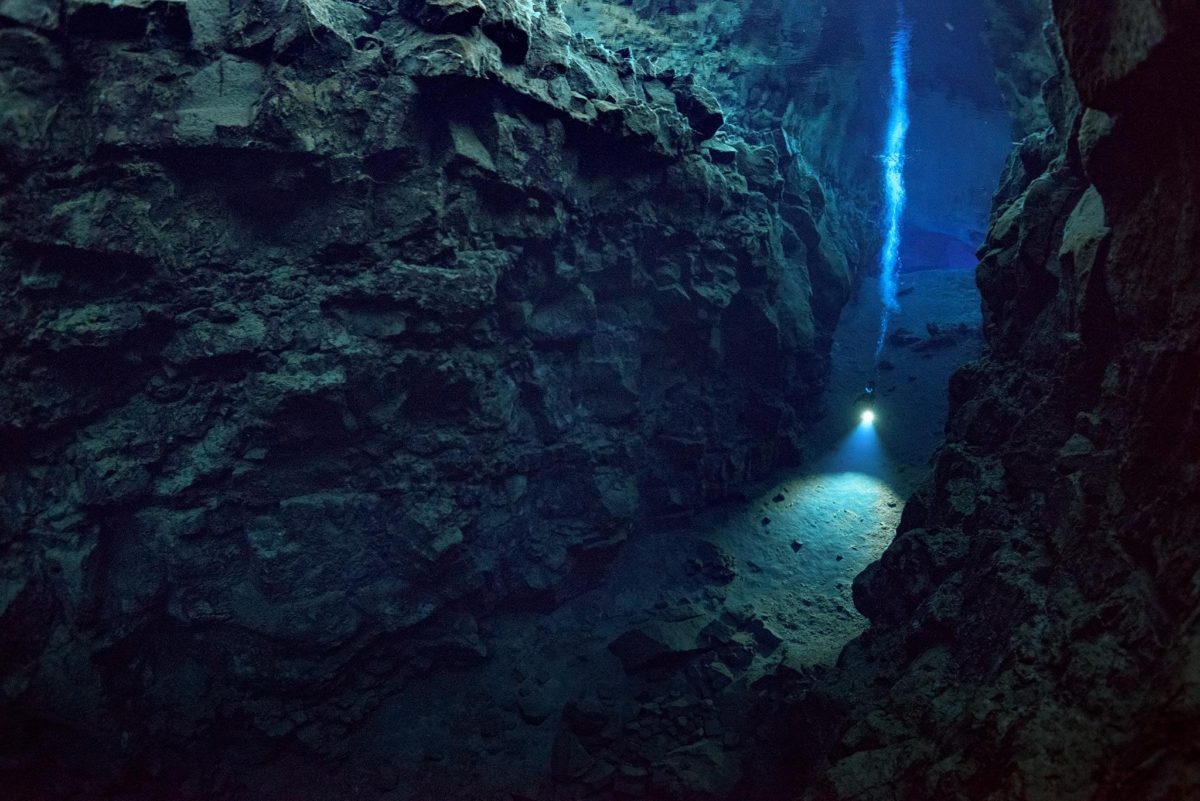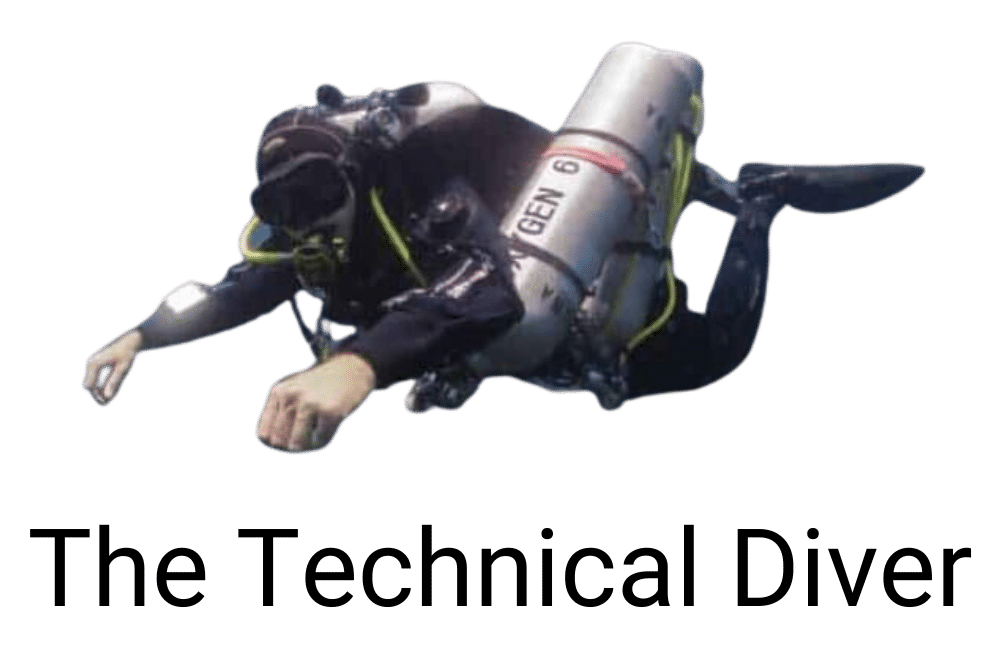Technical Diving Courses
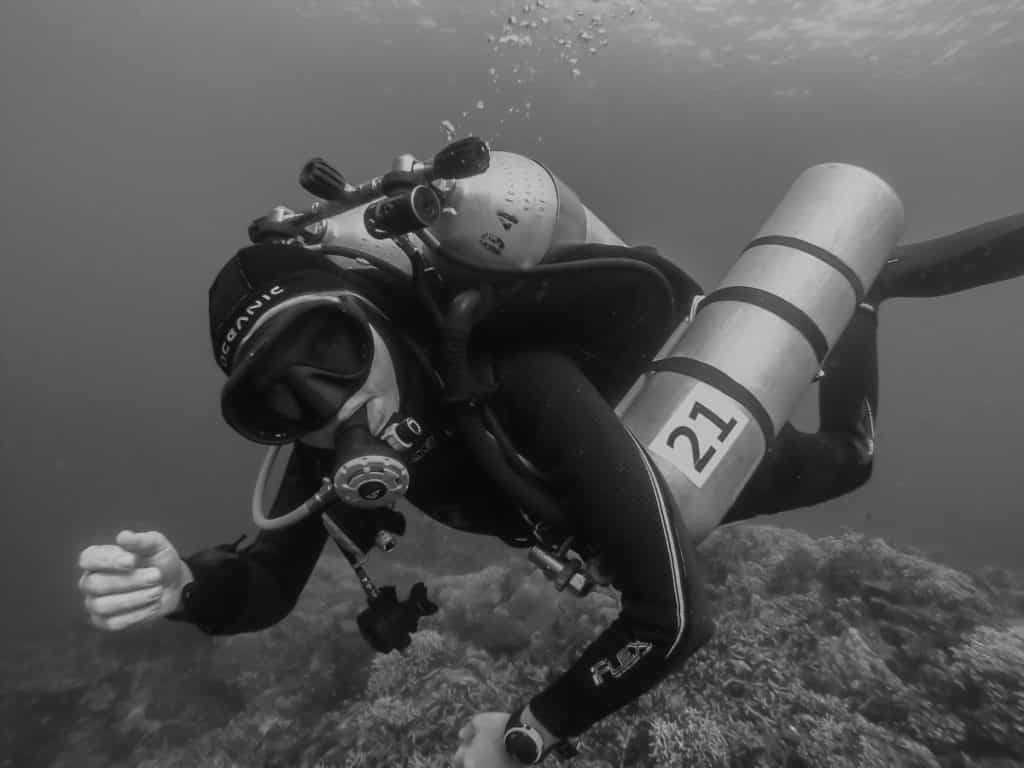
Technical diving courses
Any dive that goes beyond recreational limits is considered to be technical diving. Cave diving and decompression diving are both great examples. Additional training is required to do these types of diving. Divers must learn a wide range of skills and procedures so that the more significant inherent risks can be managed effectively. This does not mean eliminating risk, that would not be possible. Instead, technical diving courses involve learning better decision-making so that if any failures occur during a dive, they will be managed effectively. This page provides an overview of the courses you can do, along with a description of how I teach my courses. You can find mor more information on each technical diving course here.
Until the 1990s, tech diving (as it’s commonly known) was undertaken by a small percentage of divers. It didn’t even have a name, they just called it diving. But in the early 90s, the first technical-specific agencies were born, namely IANTD and TDI. They developed distinct programs that went beyond the level of diving as taught by PADI and SSI. Since then tech diving has grown steadily to become a widely recognised and increasingly practised form of diving. In the last 5 years, sidemount has played a significant role in this.
More divers than ever are getting involved in tech diving. This is fantastic for those of us that are passionate about it. Advances in technology and in particular rebreather technology, have opened up diving that was reserved for only hardcore technical divers even as recently as 10 years ago.
There are many avenues available for training. Numerous dive agencies offer technical diving courses at every level and offer training in different equipment configurations such as sidemount, backmount and CCR. With the exception of the DIR agencies (GUE, UTD and ISE), tech diving agencies recognise each other’s qualifications so you can choose the training that suits your needs. E.g. you may be a TDI extended range diver and wish to do trimix.
You may decide that the 70m depth limit of IANTD’s Normoxic diver plus is a better option than the 60m certification you will get from TDI’s trimix diver course.
My approach to tech diver training can be summed up in one simple short sentence- “This person is my future dive buddy”. What kind of diver do you want the people that you dive with to be? I want to dive with people who have a good level of control in terms of the fundamentals (buoyancy, trim, positioning, communication), without any of it taking up much of their brain power. They must be familiar with their equipment and able to interact with it efficiently. They have a high level of awareness at all times and understand that they are part of a team, whose main goal is to get back safely. I’m not a big fan of the phrase “thinking diver”, but I agree with the sentiment.
Length of technical diving courses
The length of tech courses should be entirely dependent on the student. Some divers have good fundamentals at the beginning, learn quickly and demonstrate a good understanding of what they’re taught. Others can feel overwhelmed by all the skills and procedures and may need more time to absorb them. Everyone is different, but be prepared that you may need to do additional dives to achieve certification. Regardless of how long the course takes, it’s sensible to allow time after your course to do some fun dives.
Training for the sake of more training
I have always discouraged training simply as a means to be eligible to start the next course. It’s great to have goals, i.e. you want to be a trimix diver, but if you’ve only done 5 or 6 decompression dives after your deco training, you will not be ready for a trimix course. Going out and diving is what all the training is for. Below is a general overview of the progression of tech training, including what each course covers:
Entry-level courses
The intro to tech/sidemount courses cover the equipment, approach, and diving procedures for technical diving.
This includes harness and equipment set up and use, buoyancy, trim, awareness, positioning, communication, and gas management. These are the foundations you will need for all of your technical diving. One area that I spent a lot of time on during my intro to tech courses is ascents. More specifically, ascending as a team whilst maintaining position, communicating effectively, and moving shallower at a consistent speed.
Decompression courses
You will quickly see how essential everything you learned in the entry-level training was. Decompression theory is more detailed, and we spend a lot of time on dive planning and gas management.
You will practice following a dive plan, undertaking variable ascent rates, gas switching, maintaining position during decompression stops, and good communication. Contingency situations and emergency procedures are also discussed and practised.
Learn more about advanced nitrox Learn more about deco diving
Advanced decompression courses
Extended range and trimix courses involve learning and understanding the increased complexity that comes with diving deeper. Dive planning is more intricate, as is stage handling, gas management and risk management.
It’s all about working as a team to reduce your risk and get home safe.
Learn more about extended range Learn more about trimix diving
Speciality technical diving courses
Technical diving doesn’t have any separate speciality courses as with recreational diving. But Dive Propulsion Vehicle (DPV) and solo diver complement your technical diving perfectly.
DPVs can be used on most technical dives to help cover large distances or assist with currents. Solo diver is useful to any diver, and not necessarily so they can dive alone. The course highlights how the buddy system is fallible. This is even more so when a ccr diver is with open circuit divers.
Outline of technical diving courses with the technical diver
With my technical dive training, expect a lot of in-water time, interactive theory, hands-on equipment and skills workshops, and lots of time underwater.
Course outline
Without going into specific detail about what theory you will do on which day, there is a general structure that my tech courses follow:
1- Paperwork
We have to spend time ensuring that you understand the paperwork and fill it in correctly. They are legal documents, so they must be done properly. Also, be honest on the medical form, there may be factors that can affect your safety on a dive, such as side effects of any medication you might be taking. If you answer yes to a question on the medical form, you’ll need to consult a diving doctor before diving. You will also need to have dive insurance before undertaking a course.
2- Expectation management
This is the part where we sit down and talk about diving at the level that you will be training for. You should not assume that you will achieve certification simply by taking part in a course. I have a responsibility not to certify you if I feel that you would not be safe to dive independently at the level you were trained at.
If you haven’t met the required standards for a course, for most people this usually means that they will need more dives, which comes at an extra cost. It’s obviously better that you know this before we start. There is also no refund if you don’t achieve certification. You’ll have paid for my time regardless of whether you achieved certification or not.
Expectation management is also about what you should expect from me. I need to be looking out for your safety at all times, and not pushing you into doing something you are not yet ready for or capable of. You should expect detailed explanations on every aspect of your course and have my undivided attention throughout.
3- Theory sessions
Don’t expect to just turn up and listen to me talk at you. I need to know that you understand what I’m telling you. My theory sessions are not lectures. They are interactive discussions, involving you giving me presentations on something we already went through. The best way to learn and retain something is when you have to present it to other people.
4- Equipment workshops
These are informal and similar to the theory sessions in terms of being interactive and discussion-based. I will show you my way of doing things and other methods. I will explain why I do what I do, and why I don’t do it the other way. It’s all hands-on with the gear you will be using, such as your sidemount harness, tanks, and regulators. You will present to me how you do this or that.
5- Land drills
It’s not just a case of “this is the skill and this is why and how”. Of course, we do that. But we also put it all into the context of an actual dive. When is the most likely time this failure might occur? What can you do to prevent the likelihood of it occurring? What are the human factors that come into it? Bias, drift, complacency, shortcutting, systemic failures. We can’t talk about risk management and then not apply and periodically remeasure it.
6- Pre-dive briefings
The clue is in the name; brief. A briefing should not be a sub-category of your land drills and skills discussions. If it goes on forever, your eyes will glaze over and your brain will be thinking about your favourite cheese. A briefing is this: this is the dive site, these are the conditions, this is the chronological order of what we will do, starting with gearing up and buddy checks, outlining how we will get in the water, what in-water checks we’ll perform, what we’ll do on the dive and where we will go, and ending with how we will get out of the water and where. It should end with an agreement of hand signals and an overview of safety protocols (lost diver etc).
7- In-water time
As long as possible on every dive. Every dive focuses on building the foundations whilst working on skills and procedures. The idea is not to mindlessly copy what I do, it’s to understand the process and then finesse the bigger picture of performing tasks and skills with good buoyancy, awareness, positioning and communication. We don’t drill the same thing over and over. Some dives focus on skills and scenarios, others on procedures such as ascent rates.
8- Post-dive debriefs
The single most effective in-water teaching tool is a GoPro. Video doesn’t lie, and there is nothing like seeing yourself do something right or wrong to help you to see what you need to work on. We always go through the dive in chronological order. The video is for training purposes. I do not give students copies of any of the footage. This is so it does not find itself on social media. But I do occasionally post something intentionally unless the student requests that I don’t.
If you need more information on technical diving courses that are not outlined here, please contact me.
